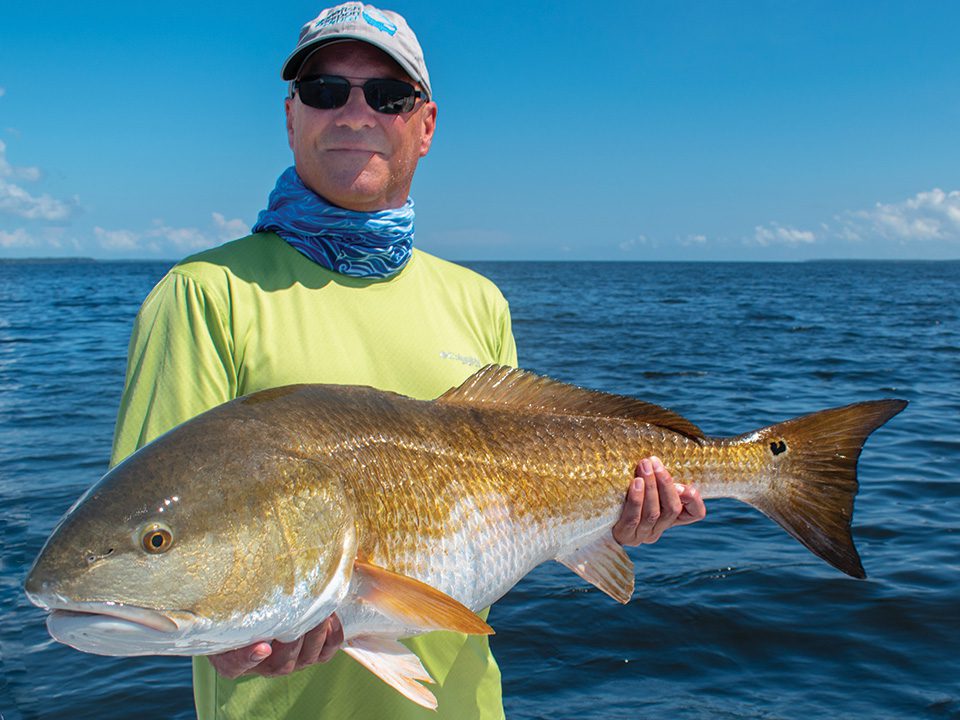By Will Schmidt
Growing up, I used corks a lot, usually to know when a bream had taken my little dough ball when I was fishing in my backyard. Later, I used them to keep track of lively white bait or aid in casting shrimp farther. Now days, I use them more as a dinner bell than anything else. I am also using them in much deeper water than you would ever expect, but here you need a little patience.
If you’ve fished the flats in saltwater, you have probably used a popping cork and a shrimp at some point. Giving your rod a sharp tug to make the cork pop always seemed to liven up the action. Well, the same can be done in deep water to help hungry reds find your meal offering. The really cool thing about this is it works with conventional tackle as well as fly setups.
The concept is pretty simple, a popping cork with about 20 inches of mono out of the bottom tied to large swimbait or fly. We use them around large schools of bait that are being worked over by breeding-sized reds.
“Pop it hard and wait at least 10 seconds. You know it’s deep here and it will take at least that long for the fish to find it,” said Capt. Gary Dubiel. He should know since he invented the Pop N Fly technique. The key is to make a huge pop with a lot of noise and then pause. The deeper the water, the longer you wait. The fish are in constant movement around enormous schools of bait. When they hear what seems to be another fish feeding, they come running to get their share. But it might take a minute. You want to make sure your bait gets straight down below the cork, as well as giving the fish plenty of time to locate it before popping again. On average, wait 8 to 10 seconds in 14 feet of water, longer if the water is deeper.
It is also nice that you don’t need live bait for this technique because it saves time at first light, making it easy to run and gun on large schools of bait. For tackle, a medium weight spinning rod with plenty of 20- or 30-pound braid will do the trick. On the fly, you will want a 10 weight to cast the rig and plenty of backing.
Below the cork, your fly or swimbait will slowly sink down looking like a stunned or wounded baitfish that seemingly escaped a vicious attack… aka an easy meal. Pop and be patient, the strikes are basically unremarkable; the cork just disappears. But the fight of these 40-plus-pound beasts on light tackle or a fly rod is much
more noteworthy.
Will Schmidt is a seasoned tournament angler who has been writing about fishing for two decades. Reach Capt. Dubiel at (252) 249-1520.
